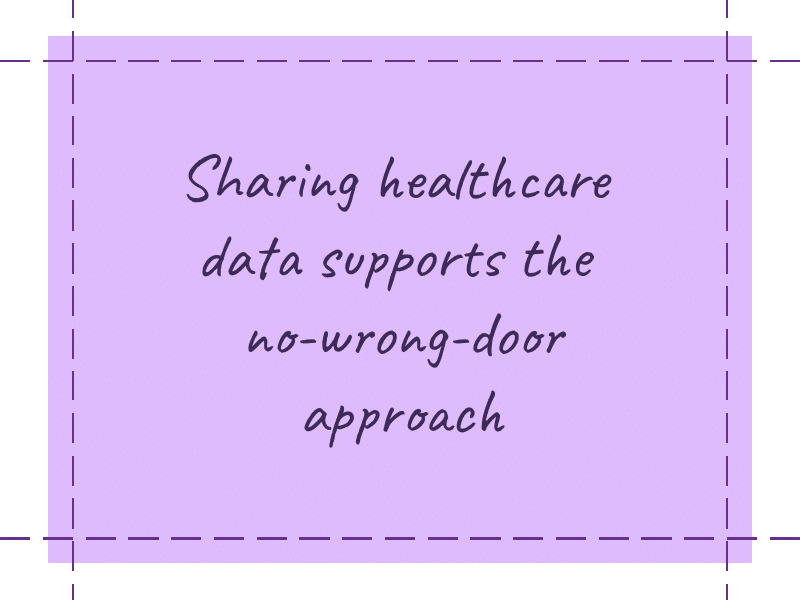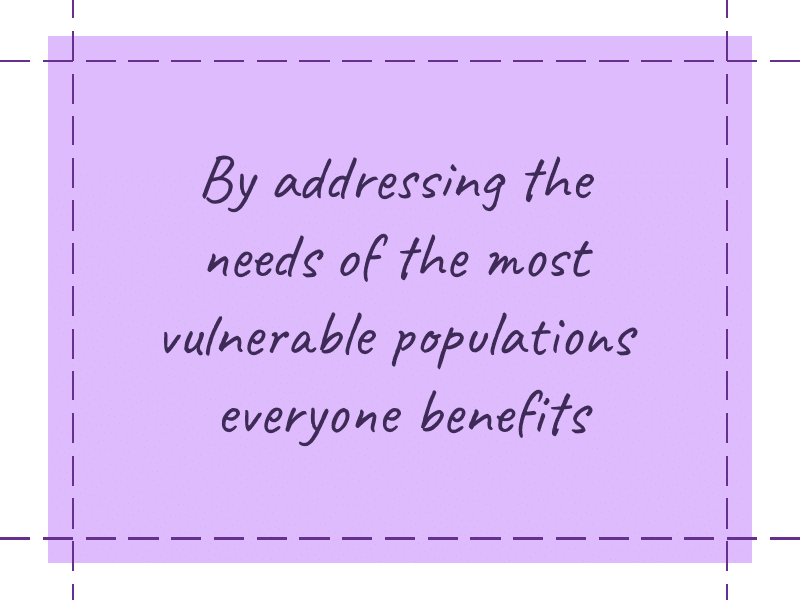Whole Person Care

Whole person care (WPC) programs combine health care, behavioral health, mental health, and social care. The goal is to diagnose and treat chronic diseases, enhance physician-patient engagement, improve outcomes, and reduce costs.
WPC eliminates barriers to care by combining health and social care initiatives to identify the unmet needs of vulnerable populations. These individuals are often referred to as safety net populations.
The vulnerable are at risk of health issues, social, and economic challenges caused by a range of health problems and life circumstances. These include frequent visits to hospital emergency rooms due to chronic diseases, mental illness, homelessness, food insecurity, re-entry, and other factors.

Adoption of Health and Social Care Software Supports Whole Person Care
The use of health and social care software—also known as a SDOH platform—is a vital component of implementing a whole person care program. Components of using social determinants of health software include:
- Initiating social determinants of health screenings that can impact physical health.
- Obtaining patient, client, or family consents.
- Establishing cross sector care teams.
- Identifying local community resources.
- Community convening to build trust, train, and adopt use of the SDOH platform.
- Communicating the availability of local initiatives to help reduce emergency room visits and manage chronic diseases. Use of care coordination software means that users can identify support for housing, food, transportation, mental health, and other community-based programs.
- Completing closed loop referrals across health and social organizations.
- Sharing data to substantiate patient risk factors and actions taken to address these concerns.
The NinePatch® Whole Person Care SDOH Platform
NinePatch Whole Person Care is a second-generation, software solution configurable for local needs that facilitates implementing social determinants of health programs. This white-labeled SDOH software supports localization and cross sector interoperability.
Program features make it easy for users to:
- Assess health, behavioral, and social needs using a variety of assessment tools
- Gain consent to share the necessary information for interdisciplinary team (IDT) involvement
- Visually identify and prioritize complex client and patient needs
- Identify services and supports not included in standard health insurance benefit programs
- Increase care team communication and understanding of how social determinants of health affect chronic disease diagnosis and management
- Make clinical and social referrals that close the loop so that users know who is providing services and can monitor patient and client progress
- Follow patient care by receiving admit, discharge, transfer (ADT) notifications
- Communicate with care team members and program beneficiaries to maintain engagement
- Share data and documents to eliminate asking beneficiaries to share or repeat information
The long-term benefits of implementing whole person care have far-reaching impact for public health initiatives. Whole person care initiatives that reduce healthcare costs and improve health and well-being translate to all populations.
NinePatch brings communities together to address the needs of the most vulnerable populations—so that everyone benefits. RIE™ is a companion program. Referral information exchange software eliminates interoperability challenges by making sure that all programs in the system can send and receive referrals.
The Path to Support Whole Person Care
While there are many factors to provide whole person care, a basic requirement is social determinants of health software that supports interoperability. Clinical and social organization data exchange and software programs don’t always speak the same language. This gap makes data transfer difficult, time-consuming, or impossible for low tech organizations.
Whole person care technology opens the door so that efforts in local communities generate success.
Sharing healthcare data supports health outcomes and the no wrong door approach. Providers can more easily manage health related social needs impacted by social determinants of health circumstances.
Impacting health and social needs requires a community of committed individuals. Creating network connections with health services and social services is a key part of providing whole person care.

Whole Person Care in Action
Implementation of whole person care pilot programs in California, funded by CMS, have shown results. Funding by the Centers for Medicare and Medicaid Services (CMS) began over five years ago.
Between 2016 and 2020 the state of California implemented twenty-five whole person care pilot programs. These health care programs focused on enhanced care management and in lieu of services. Information about these programs can be found in the report Whole Person Care Promising Practices for Medi Cal managed care plans.
The actions of community organizations offer valuable results and insights. A few examples include:
- Increased client engagement. Care coordination teams partnered with Sprint who provided free refurbished smart phones for a low monthly fee.
- Reduced homelessness and extended service access. Safe overnight parking areas increased contact with community organizations.
- Prevented housing evictions due to support from case managers and legal services.
Results from five years of the CMS Accountable Health Communities Models confirm progress with HRSN screening, referral and care navigation. Included organizations were Accountable Care Organizations (ACOs), Medicaid Managed Care, Medicaid health homes and community-based services. (Can link to the health affairs article)
Advancing Social and Clinical Care
Cross industry collaboration is critical to advance whole person care. While buying or building is a trend, health and social organizations who join to link value based and social care will lead by example.
Health systems and payers who create shared reimbursement opportunities with CBOs will deliver proven results.
Community-based organizations can advance SDOH efforts in local communities. Proactively approaching healthcare organizations to create revenue sharing opportunities can support long-term financial sustainability.
The result is a win-for health and social care organizations and communities at large. Efforts to promote public health can reduce healthcare disparities for all.
